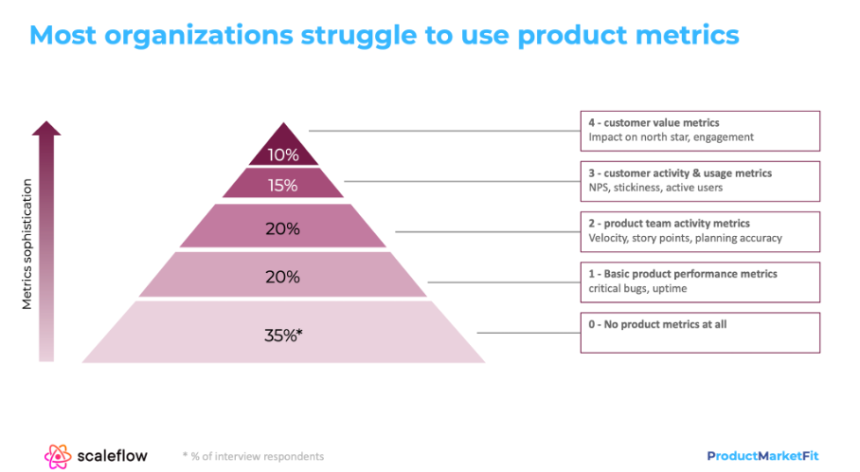How to run a successful product department. Lessons from tech companies
How to run a successful product department. Lessons from tech companies
At travel website Trivago, Head of Product, Wilco van Duinkerken, managed the rapidly growing Product department. Hundreds of new employees started every month. The current CTPO of Scaleflow uses the experience he gained at Trivago between 2018 and 2019 in his new start-up today. Wilco is only too happy to share his advice with the product managers of the Fortino start-ups and scale-ups.
Wilco and his co-founders at Scaleflow, Wouter Neyndorff and Marcel Holsheimer, conducted preliminary research through interviews with 23 CEOs and CTOs of start-ups and scale-ups. From this, they identified best practices in building and scaling product teams.
With a software product being the most important driving force for growth, the product team is the biggest headcount investment for tech companies. Up to 40% of the total team works on the software.
Their research shows that product teams at start-ups grow by 100% while scale-ups grow by 10 to 30%. CEOs expect these teams to support the growth of their company by:
- building high-quality products to increase customer satisfaction and reduce churn.
- constantly innovating to maintain the competitive advantage and increase the value for the customer.
- delivering quickly, flexibly and predictably to ensure agility and a short time to market.
- attracting and retaining talent to build a high-performance product team.
Expectations are high. But are they met?
Often they're not, says Wilco: “Rapidly growing companies hire huge numbers of employees. But then they realise that often they don't grow any faster by hiring these extra people. However, they do notice that departments argue with each other and often build functions that customers don't use. For more on this, please take a look at the following article: 80% of what you develop doesn't get sold or isn't used? Keynote speaker and product specialist Ferdinand Goetzen helps you get the right product to the best customers.”

Wilco advises companies to go for a combination of more structure, with freedom and interaction.
Find your North Star
“I advise every company to find a set of metrics that guides them with one North Star metric in it,” says Wilco. “This North Star metric reflects what customers find valuable and how progress is measured, brings structure and clarity to product development, because it teaches this team what problems customers face and what development is necessary. This methodology is best broken down into individual metrics for each part of the customer journey, for example metrics on reach, activation, paying customers and engagement.”
Few start-ups and scale-ups work methodologically, Wilco's research shows. 35% have no product metrics at all. 20% use basic statistics to map product performance such as critical bugs and uptime. At the very top of this pyramid are the mere 10% that systematically deploy customer value metrics.
“If you don't know which metrics to choose, start with three. Find out how they work. Then stop using the two least effective ones.”

Leave space for everyone… within a defined context
Be careful not to make this metrics and procedures framework too rigid. Wilco advises leaving space to allow everyone to influence the process. Preferably in flexible and multidisciplinary teams: “When we expanded our product department by 100 people every month at Trivago, we reached a point where we created large clusters of people. We gave them a space and a well-defined task. It was then up to them to carry it out. They had to figure out how they did it in their team.”
“However, this only works if you give them a business context. If you only give autonomy, they'll be all over the place. They can get the context from the organisation, from their close contacts with sales and customers and by measuring and following up developments. From there, they learn which features are being used, and that helps reduce product waste.”
Encourage your team to work and interact
Interaction between departments and with customers is Wilco's third key pillar in running a successful product development department. “It's not finished when you click 'done' on your ticket in Jira. No, then the other departments still have to work on it," Wilco says. “Ideally, the product development team's responsibility only ends after testing, the product launch, training and new customer start-ups.”
And don't forget that the job of programmer and your company's strong growth are challenging for many of your employees, Wilco adds: “Don't forget to inspire your teams. Hyper-fast growth demands a lot from your people. An attractive, stimulating company culture is incredibly important here.”
If you’re a Europe-based B2B SaaS company looking for advice and potential investment, we can help. Get in touch, and let’s get the conversation started.